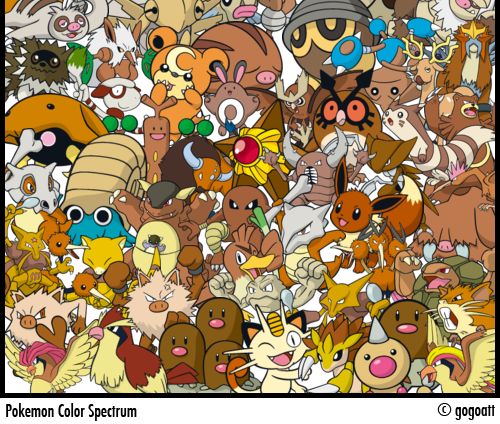iphleandro-blog
scraps
194 posts
Latest Posts by iphleandro-blog

Sittin at the desk

Top Shot: A Lion’s Gaze
Top Shot features the photo with the most votes from the previous day’s Daily Dozen, 12 photos selected by the Your Shot editors. The photo our community has voted as their favorite is showcased on the @natgeoyourshot Instagram account. Click here to vote for tomorrow’s Top Shot.
Your Shot photographer Pratha Narang photographed this lion after a buffalo hunt. Your Shot Producer, David Y. Lee writes, “Fantastic portrait of this magnificent animal. I agree with Your Shot photographer Jiawei L. who commented, ‘This is such an intense photo! I love the frame gives me an opportunity to look through the blur branches and finally reach the eye of the lion. It is such an intense spot!’” Photograph by Pratha Narang


Zany zebra facts: 1) Each zebra has a unique stripe pattern—no two are alike. 2) A zebra’s eyesight at night is thought to be about as good as that of an owl. 3) Zebras have a pad of fat under their mane that keeps it standing straight up.
Thanks to Todd Lahman for the stunning shot of Zari the zebra.







Offering a showy Large Curled with eyes at base, on matrix, Phacops Spine Trilobite. From Mt. Issimour, Morocco, 350 million years 2.4 inch wide fossil only by 2 inches. Overall 3 inches tall by 2.5 inch wide. Shows all around, excellent coloration and professional prep. No spines missing.
www.etsy.com/shop/GoldenHourMinerals
http://stores.ebay.com/Golden-Hour-Fossil-and-Minerals www.goldenhourminerals.com
Gray wolves by Chad Barry








Pokemon Spectrum | by gogoatt







no fucking way

I want to be the first person on the moon to shoot a sniper rifle at earth and hit a wasp nest. my whole life so far is leading up to that moment
Snuggly boy and his favorite toy.
Video by Marielle Tepe
WHAT A JERK
are you good sir
How to create the creepy mirror effect using a panorama. By lililwanjun10











Just a reminder that I do have an etsy store with Legacy of Kain neckwarmers and badges, dragon age neckwarmers and bracelets, and all my Batman Illusion scarves!
Www.etsy.com/shop/polkadotnerd
I have a ton of expenses coming up soon, so reblogs are encouraged and appreciated!



Just for fun! Why did nobody notice Raziel’s very strange appearance I wonder?





Arte conceptual de Legacy of Kain: Defiance Vol. 02
Fiann on Instagram: “Here is a shot along the vertebral column of my smallest ichthyosaur called Bella. At the end you’ll see how her vertebrae compare to the biggest vert I’ve found from the same location. This huge bone is from an animal that would have been over 8 metres long, which is a bit bigger than poor little Bella! These fossils are both around 198 million years old. Bella was prepared by the ever talented @alexander_james_moore.





You and I had a fight recently.
JÓVENES INVESTIGADORES: 1.PALEONTOLOGÍA
Young researchers in paleontology. Universidad Autónoma de Madrid
Study tips
Be active while studying :
Do not mindelssly skip through your notes.Make sure you are fully understanding the material that you are working on. Ask yourself questions. If you can answer them , that’s cool, if you can’t, note them down on a post-it and ask your teacher or classmates or maybe google it. If you can’t focus take a break and come back later.
Set the mood for studying:
Wash you face and hands with cold water, or take a shower. Put on comfy clothes. Organize your study space and clean it up. Get yourself a snack and a cup of coffee or tea or just plain water, whatever works for you. Set the stuff you need for studying and get rid of anything else. If you don’t need your phone for studying, turn the wi-fi off and put it away from you. Start a study playlist if you want. Put your to do list right in front you and get to it.
Make a TO DO list:
Grab a white sheet of paper. Brain dump all the tasks you have to do for the day, prioritize them, and write them again in a clean way, while dismissing the unimportant tasks if you don’t have enough time.
Take breaks when you need them :
If you take too much you’ll lose focus, if you don’t take enough, your studying won’t be effective. If you can’t get yourself to study, set a timer for 30 min, take a 10 min break and work to add to the length of the studying each time.
Eat the frog :
Start with the boring and hardest tasks first. You’ll be more motivated to get work done after you get them out of the way.
Break up big goals to shorter clear tasks :
Don’t write for example ’ study maths ’ as a task, instead note exactly how you’re planning to do it, for instance ’ work 10 exercices from a certain book’ . It feels easier to get work done when it’s not just a vague goal.
Start homework as soon as you get. If you are busy, schedule a time block for doing it asap.
Break big projects to smaller tasks and schedule them on your planner.
You’ll more likely do them if you see them in your planner, then if it’s just an unclear deadline freaking you out and that you don’t know how to start.
Go to your classes and pay attention to your teachers:
Be ACTIVE. Ask questions, participate in class, it’s really helpful . Take your own notes, in your own way and don’t do just mindlessly note everything your teacher says. Pick just the important stuff or those that aren’t in the text book. Draw mind maps, lists, diagrams, use colors and leave space and margins.
When reviewing your notes, make them easier to understand by adding remarks from other sources in the margings.
I don’t know if it’s clear enough. But while reviewing my notes I like to use a pencil and try to make my notes easier to grasp, for example, write down a general way to solve all the problems that are similar to one that you have seen in class.
Study EVERYDAY:
Make studying a daily task. Don’t wait until the night before the test. Stay up to date with your classes.
Prepare your classes ahead of time time:
Read the text book. Google it. Watch YouTube videos. Take some notes and write questions for all the things you didn’t understand to ask in class. This way you won’t be overwhelmed in class and manage to not fall behind and make the most out if it.
Practice practice practice problems :
Work as much exercices as you can, and all the previous exams that you get your hands on. That way you know what the professor usually test the students on, and also you get used to working with your lessons, especially for maths and physics and such subjects.

Dsungaripterus. Cretaceous. China

Today’s doodle: Torvosaurus tanneri for some signage at Eccles Dinosaur Park. Happy #FossilFriday!









Alan Turing: A Tribute
See more images at: http://futurism.com/images/
http://futurism.com/images/turing/
Ten things you might not know about particle accelerators
With input from scientists at laboratories and institutions worldwide, symmetry has compiled a list of 10 things you might not know about particle accelerators.
1. There are more than 30,000 accelerators in operation around the world.
Accelerators are all over the place, doing a variety of jobs. They may be best known for their role in particle physics research, but their other talents include: creating tumor-destroying beams to fight cancer; killing bacteria to prevent food-borne illnesses; developing better materials to produce more effective diapers and shrink wrap; and helping scientists improve fuel injection to make more efficient vehicles.

2. One of the longest modern buildings in the world was built for a particle accelerator.
Linear accelerators, or linacs for short, are designed to hurl a beam of particles in a straight line. In general, the longer the linac, the more powerful the particle punch. The linear accelerator at SLAC National Accelerator Laboratory, near San Francisco, is the largest on the planet. SLAC’s klystron gallery, a building that houses components that power the accelerator, sits atop the accelerator. It’s one of the world’s longest modern buildings. Overall, it’s a little less than 2 miles long, a feature that prompts laboratory employees to hold an annual footrace around its perimeter.
3. Particle accelerators are the closest things we have to time machines, according to Stephen Hawking.
In 2010, physicist Stephen Hawking wrote an article for the UK paper the Daily Mail explaining how it might be possible to travel through time. We would just need a particle accelerator large enough to accelerate humans the way we accelerate particles, he said. A person-accelerator with the capabilities of the Large Hadron Collider would move its passengers at close to the speed of light. Because of the effects of special relativity, a period of time that would appear to someone outside the machine to last several years would seem to the accelerating passengers to last only a few days. By the time they stepped off the LHC ride, they would be younger than the rest of us. Hawking wasn’t actually proposing we try to build such a machine. But he was pointing out a way that time travel already happens today. For example, particles called pi mesons are normally short-lived; they disintegrate after mere millionths of a second. But when they are accelerated to nearly the speed of light, their lifetimes expand dramatically. It seems that these particles are traveling in time, or at least experiencing time more slowly relative to other particles.
4. The highest temperature recorded by a manmade device was achieved in a particle accelerator.

In 2012, Brookhaven National Laboratory’s Relativistic Heavy Ion Collider achieved a Guinness World Record for producing the world’s hottest manmade temperature, a blazing 7.2 trillion degrees Fahrenheit. But the Long Island-based lab did more than heat things up. It created a small amount of quark-gluon plasma, a state of matter thought to have dominated the universe’s earliest moments. This plasma is so hot that it causes elementary particles called quarks, which generally exist in nature only bound to other quarks, to break apart from one another. Scientists at CERN have since also created quark-gluon plasma, at an even higher temperature, in the Large Hadron Collider.
5. The inside of the Large Hadron Collider is colder than outer space.

In order to conduct electricity without resistance, the Large Hadron Collider’s electromagnets are cooled down to cryogenic temperatures. The LHC is the largest cryogenic system in the world, and it operates at a frosty minus 456.3 degrees Fahrenheit. It is one of the coldest places on Earth, and it’s even a few degrees colder than outer space, which tends to rest at about minus 454.9 degrees Fahrenheit.
6. Nature produces particle accelerators much more powerful than anything made on Earth.
We can build some pretty impressive particle accelerators on Earth, but when it comes to achieving high energies, we’ve got nothing on particle accelerators that exist naturally in space. The most energetic cosmic ray ever observed was a proton accelerated to an energy of 300 million trillion electronvolts. No known source within our galaxy is powerful enough to have caused such an acceleration. Even the shockwave from the explosion of a star, which can send particles flying much more forcefully than a manmade accelerator, doesn’t quite have enough oomph. Scientists are still investigating the source of such ultra-high-energy cosmic rays.
7. Particle accelerators don’t just accelerate particles; they also make them more massive.
As Einstein predicted in his theory of relativity, no particle that has mass can travel as fast as the speed of light—about 186,000 miles per second. No matter how much energy one adds to an object with mass, its speed cannot reach that limit. In modern accelerators, particles are sped up to very nearly the speed of light. For example, the main injector at Fermi National Accelerator Laboratory accelerates protons to 0.99997 times the speed of light. As the speed of a particle gets closer and closer to the speed of light, an accelerator gives more and more of its boost to the particle’s kinetic energy. Since, as Einstein told us, an object’s energy is equal to its mass times the speed of light squared (E=mc2), adding energy is, in effect, also increasing the particles’ mass. Said another way: Where there is more “E,” there must be more “m.” As an object with mass approaches, but never reaches, the speed of light, its effective mass gets larger and larger.
8. The diameter of the first circular accelerator was shorter than 5 inches; the diameter of the Large Hadron Collider is more than 5 miles.
In 1930, inspired by the ideas of Norwegian engineer Rolf Widerøe, 27-year-old physicist Ernest Lawrence created the first circular particle accelerator at the University of California, Berkeley, with graduate student M. Stanley Livingston. It accelerated hydrogen ions up to energies of 80,000 electronvolts within a chamber less than 5 inches across. In 1931, Lawrence and Livingston set to work on an 11-inch accelerator. The machine managed to accelerate protons to just over 1 million electronvolts, a fact that Livingston reported to Lawrence by telegram with the added comment, “Whoopee!” Lawrence went on to build even larger accelerators—and to found Lawrence Berkeley and Lawrence Livermore laboratories. Particle accelerators have come a long way since then, creating brighter beams of particles with greater energies than previously imagined possible. The Large Hadron Collider at CERN is more than 5 miles in diameter (17 miles in circumference). After this year’s upgrades, the LHC will be able to accelerate protons to 6.5 trillion electron volts.

9. In the 1970s, scientists at Fermi National Accelerator Laboratory employed a ferret named Felicia to clean accelerator parts.
From 1971 until 1999, Fermilab’s Meson Laboratory was a key part of high-energy physics experiments at the laboratory. To learn more about the forces that hold our universe together, scientists there studied subatomic particles called mesons and protons. Operators would send beams of particles from an accelerator to the Meson Lab via a miles-long underground beam line. To ensure hundreds of feet of vacuum piping were clear of debris before connecting them and turning on the particle beam, the laboratory enlisted the help of one Felicia the ferret. Ferrets have an affinity for burrowing and clambering through holes, making them the perfect species for this job. Felicia’s task was to pull a rag dipped in cleaning solution on a string through long sections of pipe. Although Felicia’s work was eventually taken over by a specially designed robot, she played a unique and vital role in the construction process—and in return asked only for a steady diet of chicken livers, fish heads and hamburger meat.
10. Particle accelerators show up in unlikely places.

Scientists tend to construct large particle accelerators underground. This protects them from being bumped and destabilized, but can also make them a little harder to find. For example, motorists driving down Interstate 280 in northern California may not notice it, but the main accelerator at SLAC National Accelerator Laboratory runs underground just beneath their wheels. Residents in villages in the Swiss-French countryside live atop the highest-energy particle collider in the world, the Large Hadron Collider. And for decades, teams at Cornell University have played soccer, football and lacrosse on Robison Alumni Fields 40 feet above the Cornell Electron Storage Ring, or CESR. Scientists use the circular particle accelerator to study compact particle beams and to produce X-ray light for experiments in biology, materials science and physics.
Content and pictures credits to symmetry magazine
“Gödel’s incompleteness theorems argue that the truth of some mathematical systems are unknowable. Alan Turing extended that idea to computers, showing that there are some algorithms for which it is impossible to know whether a computer can complete the calculations for in a finite amount of time. Now, a team of physicists believe they have extended the concept even further to the physical realm. In a finite 2D crystal lattice of atoms it is known that it is possible to calculate in a finite time the “spectral gap"—the amount of energy between the lowest energy level of the electrons in a material and the next one up. In the new work, Toby Cubitt of University College London and his colleagues appear to have shown that in an infinite 2D lattice the calculation of the spectral gap it is impossible to know if the calculation ends. If true, that means that even if the spectral gap is known for a finite-size lattice, the value could change abruptly with just the addition of a single atom and it is impossible to know when it will do so.” - Physics Today

( Kurt Gödel (left) demonstrated that some mathematical statements are undecidable; Alan Turing (right) connected that proof to unresolvable algorithms in computer science. )
Article by Nature: Paradox at the heart of mathematics makes physics problem unanswerable
Mathematical Curiosities
More number patterns
With 9s we can produce another aesthetically pleasing pattern shown below.
999,999 · 1 = 0,999,999
999,999 · 2 = 1,999,998
999,999 · 3 = 2,999,997
999,999 · 4 = 3,999,996
999,999 · 5 = 4,999,995
999,999 · 6 = 5,999,994
999,999 · 7 = 6,999,993
999,999 · 8 = 7,999,992
999,999 · 9 = 8,999,991
999,999 · 10 = 9,999,990
Here is another number pattern, where the number 9 is multiplied by a number representing the consecutive natural numbers- increasing by 1 each time- and then added to the initial natural numbers consecutively.
0 · 9 + 1 = 1
1 · 9 + 2 = 11
12 · 9 + 3 = 111
123 · 9 + 4 = 1111
1234 · 9 + 5 = 11111
12345 · 9 + 6 = 111111
123456 · 9 + 7 = 1111111
1234567 · 9 + 8 = 11111111
12345678 · 9 + 9 = 111111111
We can consider number patterns that can be generated in a similar fashion, yet somewhat in the reverse of the previous one. However, this time the generated number consist of all 8s.
0 · 9 + 8 = 8
9 · 9 + 7 = 88
98 · 9 + 6 = 888
987 · 9 + 5 = 8888
9876 · 9 + 4 = 88888
98765 · 9 + 3 = 888888
987654 · 9 + 2 = 8888888
9876543 · 9 + 1 = 88888888
98765432 · 9 + 0 = 888888888
Now that we have introduced the 8s in a rather dramatic fashion, we shall use them as the multiplier with the numbers consisting of increasing natural numbers, and each time adding successive natural numbers. Appreciating the number pattern shown here is more pleasing than trying to explain this phenomenon, which could conceivably detract from its beauty.
1 · 8 + 1 = 9
12 · 8 + 2 = 98
123 · 8 + 3 = 987
1234 · 8 + 4 = 9876
12345 · 8 + 5 = 98765
123456 · 8 + 6 = 987654
1234567 · 8 + 7 = 9876543
12345678 · 8 + 8 = 98765432
123456789 · 8 + 9 = 987654321
Content credit: Mathematical Curiosities A Treasure Trove of Unexpected Entertainment